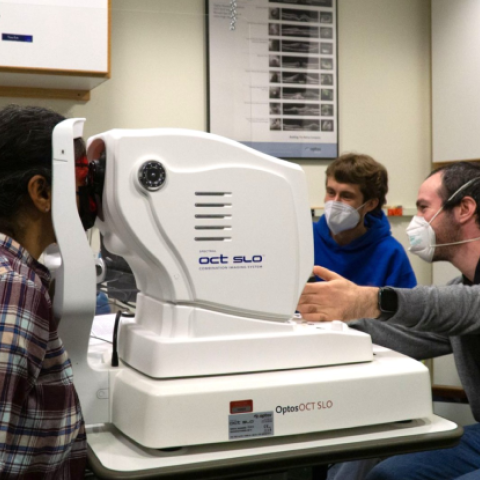
- Principal Investigator:
- Manfred MacKeben
We studied the ability of dyslexic young teenagers to fluently name pictograms (shapes of objects). We found that some dyslexics are very good at this task, some were even better than the control subjects.
We also investigated whether dyslexics make instantaneous automatic adjustments of reading saccades depending on word length. We found evidence that dyslexics have the mechanisms to make such adjustments, but that they are quantitatively impaired.
References
Trauzettel-Klosinski S, MacKeben M, Reinhard J, Feucht A, Dürrwächter U & Klosinski G (2002) Pictogram naming in dyslexics and normal children assessed by SLO. Vision Research 42(6):789-99
MacKeben M., Trauzettel-Klosinski S, Reinhard J, Dürrwächter U, Adler M& Klosinski G. (2004) Eye movement control during single word reading in dyslexics. Journal of Vision 4, No. 5, pp. 388-402

